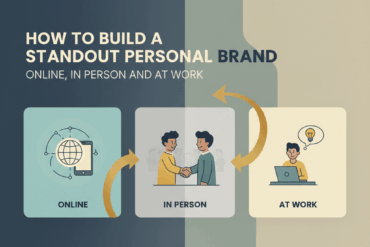By Peter Weinberg & Jon Lombardo
Brand marketing creates more financial value than short-term performance marketing – the sooner B2B marketers flip their perspective and start allocating budgets accordingly, the better it will be for everyone in B2B.
Should you be optimistic about the future of B2B marketing?
We are optimists, believe it or not. We believe B2B marketing is on the cusp of a Golden Age, a glorious revolution that shall be ushered in by a momentous event.
And we call this event…the Flippening.
To understand the Flippening, first you must understand the three numbers that explain everything that’s wrong with the B2B marketing industry.
80%, 95% and 8%.
First, 80%. If you talk to a financial analyst, they’ll tell you something like 80% of your share price is based on cash flows that are 10n years out into the future. Contrary to conventional wisdom, Wall Street is not short term. The market values businesses on their future cash flows.
Second, 95%. According to our research with the Ehrenberg-Bass Institute, something like 95% of buyers are not ‘in-market’ to buy your products right now. That means effective marketing works primarily by reaching the 95% of customers who are not yet in-market, increasing the odds your brand gets remembered when those customers do enter the market in some future period.
Contrary to conventional wisdom, delivering short-term sales isn’t the most important job for B2B marketers, because only 5% of customers are ready to buy today. The most important job is influencing the 95% of future buyers who generate future cash flows.
And finally, 8%. According to LinkedIn data, B2B marketers spend around 8% of their budgets on brand awareness objectives. Something like 92% of B2B budgets are dedicated to short term, bottom funnel objectives like lead generation.
This so-called performance marketing may capture sales from in-market buyers, but it has little to no effect on future buyers. Brand marketing is much better at building the lasting memory structures that determine future sales.
85%. 95%. 8%.
One of these numbers makes 0% sense. If 80% of your stock price is based on future cash flows and 95% of your buyers are future buyers, why would you spend only 8% of your budget on brand marketing, which increases future sales from future buyers? Why would you spend 92% of your money chasing after 5% of your customers? Isn’t that a massive misallocation of capital?
Yup!
But don’t worry, the correction is coming.
Brace yourself for the Flippening.
The Flippening: When 8% brand becomes 51% brand
So what the flip is the Flippening?
The Flippening is that magical moment when B2B businesses realise that brand marketing creates more financial value than short term performance marketing, and B2B CMOs begin to allocate at least 51% of their budgets to brand marketing.
The Flippening will spark a positive chain reaction, which will be good for everyone in B2B.
The shift to brand will benefit businesses, since brand 1) increases long- and short-term sales, 2) improves pricing power, 3) reduces talent acquisition and retention costs, 4) unlocks growth in new categories, and much more.
Sales does not share power. The bottom of the funnel is the land of Mordor, where sales torments marketing for all eternity.
By creating more commercial value, marketing will enhance its status within B2B organisations. Instead of sitting in the basement, colouring in our whitepapers and sales collateral, marketing will get back to the boardroom with the decision makers.
Moving up the funnel will also make the job of B2B marketing a million times more enjoyable. The problem with the bottom of the funnel is that marketing has to ‘share’ its success with sales. And as Gandalf once said to us: “There is only one Lord of the Rings, and he does not share power.”
There is only one department that will ever get credit for delivering short-term sales, and it’s the sales department. Sales does not share power. The bottom of the funnel is the land of Mordor, where sales torments marketing for all eternity. The top of the funnel is the Shire, where marketers can frolic like happy little hobbits. Marketing has a monopoly at the top of the funnel. Only we can influence future buyers at scale through brand advertising.
The Flippening will even benefit performance marketers, both by lowering their precious cost-per-leads and by increasing their budgets. That’s right – we don’t believe brands’ growth will come at the expense of lead generation. It’s incremental. Businesses need to both influence ‘out-market’ buyers and capture in-market buyers. The Flippening will grow the overall marketing budget. Performance marketing will receive a smaller slice of a much bigger pie.
Yum!
Feature Image Credit: Shutterstock
By Peter Weinberg & Jon Lombardo
Sourced from MarketingWeek





